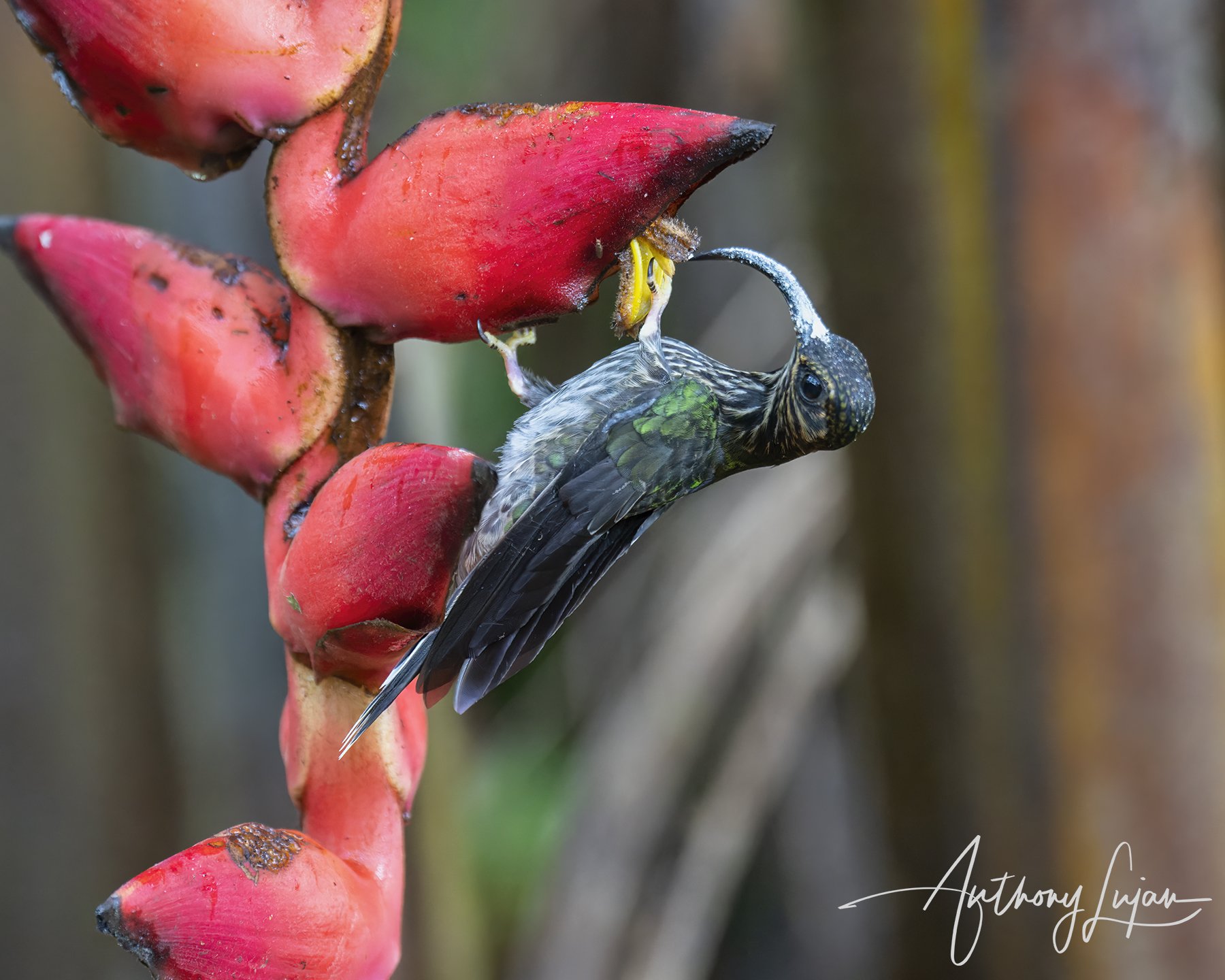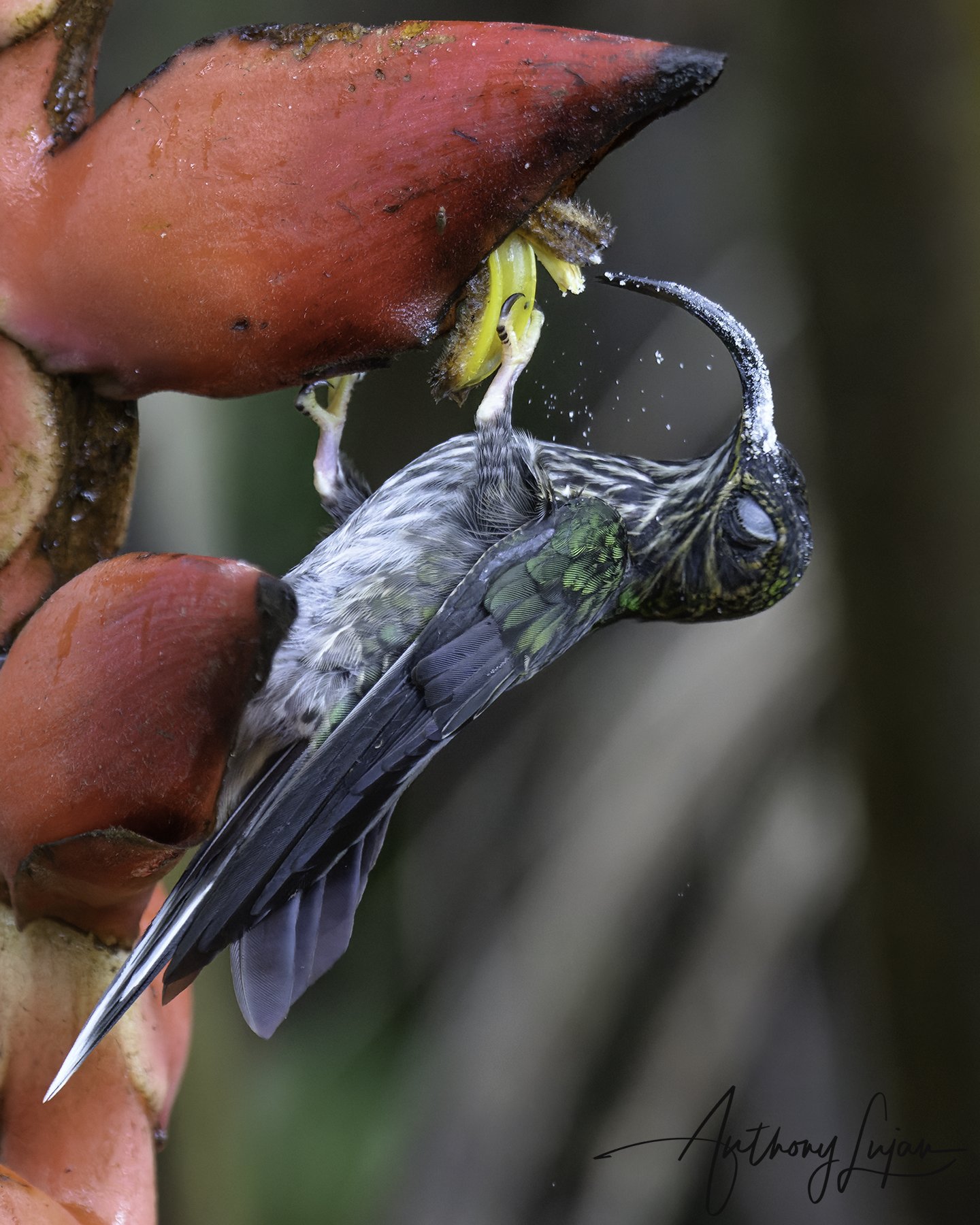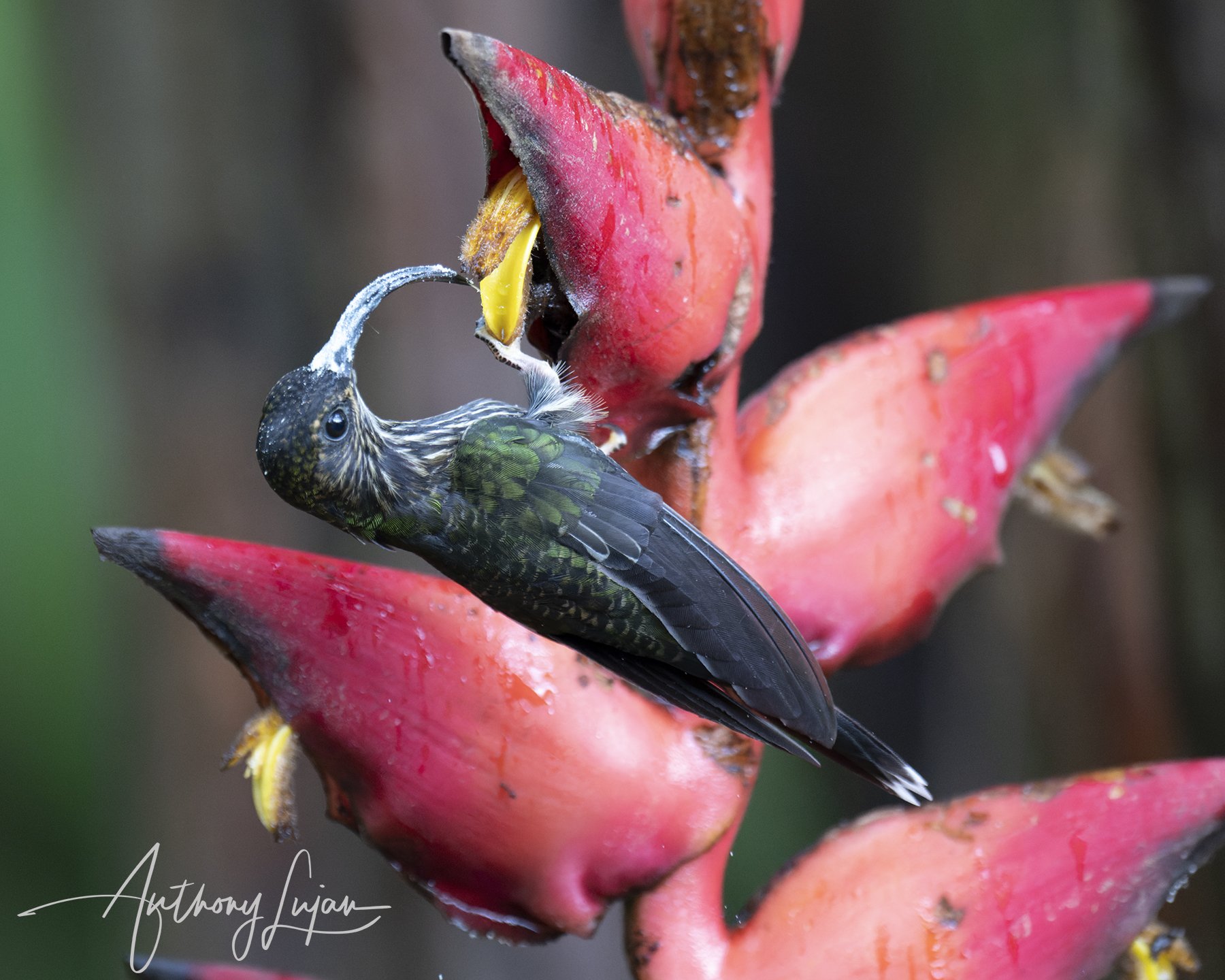White-tipped Sicklebill
White-tipped Sicklebill (Eutoxeres aquila)
Name Origin:
The genus Eutoxeres is from Greek eu (“well”) and toxo (“bow”), a reference to the deeply decurved bill. The species name aquila is Latin for “eagle,” possibly alluding to the bird’s strong, hooked bill.
Quick Facts
Length: 10–12 cm (3.9–4.7 in)
⚖️ Weight: ~8–9.5 g (0.28–0.34 oz)
🌎 Range: Central America (Costa Rica, Panama) and the Andes from Colombia south to northern Peru and west to Ecuador
🛍️ Elevation: 200–1,800 m (660–5,900 ft)
🌺 Diet: Nectar (especially from Heliconia and other curved flowers), also small insects
🏡 Habitat: Humid lowland and foothill rainforest, forest edges, and ravines
🧬 Clade: Phaethornithinae “Hermits”
📊 Status: Least Concern (IUCN 2024)
Subspecies & Distribution
Three subspecies:
Eutoxeres aquila salvini
Distribution: Costa Rica to western Colombia.Eutoxeres aquila heterurus
Distribution: Western Andes from southwest Colombia (Cauca) to southwest Ecuador.Eutoxeres aquila aquila
Distribution: Eastern Andes from Colombia south to northern Peru. Recently noted in western Venezuela (Mérida).
Species Overview
The White-tipped Sicklebill is a large, unique hummingbird, easily recognized by its extremely curved bill and white-tipped tail feathers. It is a specialist of Heliconia flowers, with a foraging strategy centered on the deep, curved blossoms of forest undergrowth. Its slow, methodical flight and preference for dense, shady ravines set it apart from more typical, fast-moving hummingbirds.
Male Description:
Males are dark green above, with a white band on the tail tips and a prominent decurved bill. Underparts are dusky with a green gloss, and the tail is broad and rounded.
Female Description:
Females are similar but slightly paler and often show buffy spotting or streaking on the underparts. The bill is as strongly curved as in the male.
Habitat & Behavior:
Found in humid forests, ravines, and shady edges, this species feeds almost exclusively at deep, curved flowers like Heliconia. Its flight is slow and deliberate, with frequent perching in the dark understory. Males and females are generally solitary, not territorial, and rarely aggressive.
Conservation Note:
Although local and specialized, the White-tipped Sicklebill is widely distributed and considered of Least Concern. Its dependence on intact forest and Heliconia-rich habitats means ongoing deforestation could reduce some populations, especially outside protected areas.
Below are individuals of the White-tipped Sicklebill (Eutoxeres aquila aquila)
Photographed at:
RN Retorno del Colibrí, Tolima, Colombia
These individuals belong to the subspecies aquila, found in the eastern Andes from Colombia south to northern Peru, with recent records from Mérida in western Venezuela. It occupies humid montane forest edges and shady ravines, feeding almost exclusively on deeply curved flowers. The curved bill and contrasting white-tipped tail feathers are consistent across its range.


Below are individuals of the White-tipped Sicklebill (Eutoxeres aquila salvini)
Photographed at:
Nectar & Pollen Reserve, Limón, Costa Rica
Esquipulas Rainforest Lodge, Puntarenas, Costa Rica
These individuals belong to the subspecies salvini, which ranges from Costa Rica through western Panama into western Colombia. It inhabits humid lowland and foothill forests, often foraging in dense Heliconia patches along streams and ravines. This population is notable for its strong association with curved-blossomed flowers and its broad white-tipped tail.






Checkout Anthony’s playlist of this species! Click the top right dropdown to see all the videos.

